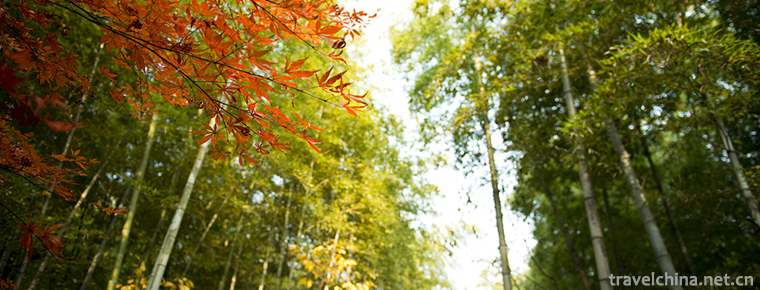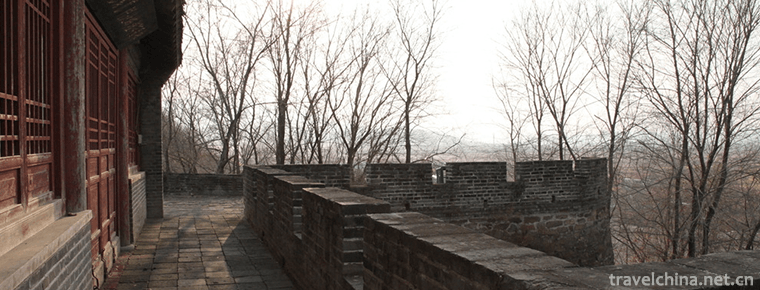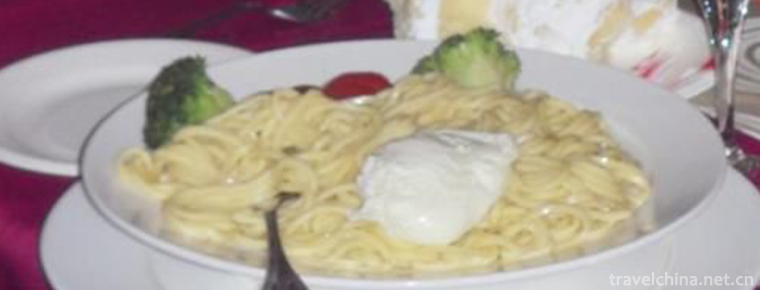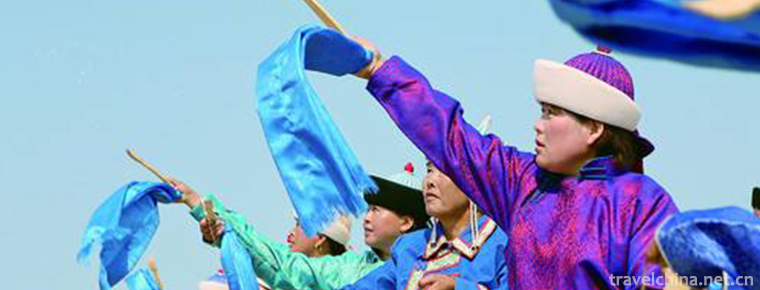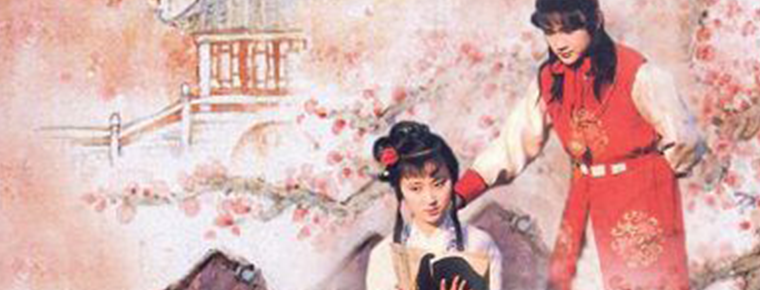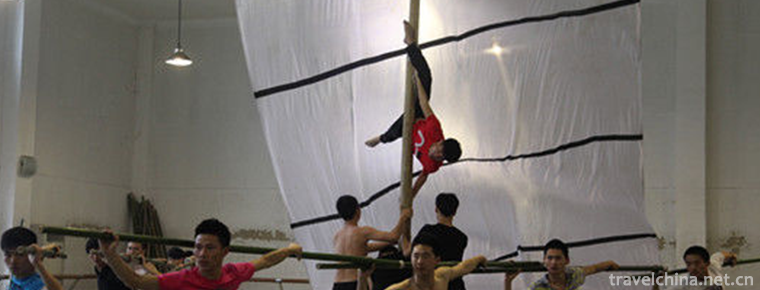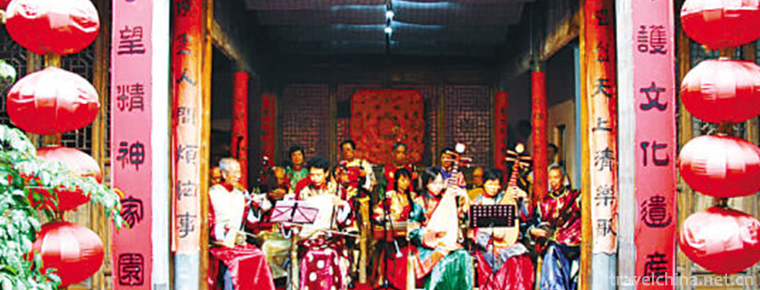Liaoheyuan National Forest Park
Liaoheyuan National Forest Park
Liaoheyuan National Forest Park is located in Dawopu Forest Farm, Pingquan County, Hebei Province. It is named for its birthplace of Liaohe River in China.
The total area of the park is 11886 hectares, with forest coverage of 81.2%. The main peak of the park is Mt. Mayu (Bare Mountain) at an elevation of 1738 meters. There are large areas of primary secondary forest in the park, and the vertical distribution of plants is obvious. There are more than 2000 kinds of plants, including 198 kinds of woody plants, and more than 20 kinds of wildlife including leopard and golden carving, which are the first-class protected animals in China.
geographical environment
Liaoheyuan National Forest Park is located in the hinterland of Dawopu Forest Farm 60 kilometers northwest of Pingquan County, Hebei Province. It is bordered by Lingyuan City of Liaoning Province, Ningcheng County of Inner Mongolia and Chengde County of Hebei Province in the east, north and West respectively. It is 80 kilometers away from Chengde City and has a total area of 230 square kilometers.
Mountain physiognomy
Liaoheyuan National Forest Park belongs to the transitional zone of Inner Mongolia platform anticline and Qilaotuling in geotectonics. Since the Mesozoic Yanshan movement, surface volcanic eruption, magmatic overflow and many times of magmatic activity, with the crustal movement gradually rising to land, forming different granites, caves and cliffs, such as Zhongshan, low mountains and hills, forming a variety of landscapes.
Climatic characteristics
The region belongs to the temperate zone over to the middle temperate zone, semi-humid and semi-arid continental cool-temperate mountain climate, characterized by distinct seasons, hot and rainy season, abundant sunshine, abundant rainfall, small wind and sand, large temperature difference between day and night, annual average temperature of 5-7 C, annual average heavy rainfall of 500-700 mm, mainly concentrated in July-September, maximum daily rainfall of 170 mm, frost-free period of 120-130 days, winter snow cover of 5. Month, the maximum frozen soil layer 143 cm.
natural resources
water resource
The park is rich in water resources. The Laoha River, which originates from Toudao Water Spring (the source of Liaohe River), flows through Liuxi Township, Loess Liangzi Town and Ningcheng County and then into the West Liaohe River. The watershed covers an area of 1349.13 square kilometers, runoff is 0.9 billion cubic meters, groundwater is 0.246 cubic meters, and the depth is less than 1.5 meters. The water quality is sodium carbonate, calcium, magnesium water and mineralization degree is less than 0.5/liter, which belongs to freshwater.
Biological resources
There are 988 kinds of plants and 260 kinds of animals in the park. Among them, there are 18 kinds of endangered plants such as Juglans mandshurica, Rhododendron cuckoo and Cymbidium grandiflorum. There are more than 30 kinds of national protected animals such as golden carving, leopard, Swan and so on. There are 219 ancient and famous trees with records over one hundred years, which are praised by experts as "green gene pool" and "animal and plant kingdom".
Soil resources
The main types of soil in the park are brown soil, cinnamon soil and meadow, which form middle and low mountain distribution zones with different altitudes. The brown soil distributes between 300 and 700 meters above sea level. The brown soil distributes over 700 meters above sea level. The meadow soil distributes in valleys, low terraces of rivers, shady slopes and semi-shady slopes mostly consist of loam and sandy loam. The thickness of soil layer is 30-60 cm, and the sunny slopes are sandy coarse Valley soil. Layer thickness is 20-30 cm, soil PH value is 6.5-7.5, organic matter content is rich, the general surface soil content is 0.5-4.8%, the highest can reach 15%.
mineral resources
Up to 2003, 40 mineral resources have been found and 25 proven reserves have been found. 20 mineral resources are being developed, such as gold, silver, copper, iron, zinc, molybdenum, manganese, fluorite, bentonite and coal.
Scenic spot landscape
The park is divided into three scenic spots, namely, Liaoheyuan Forest Bath Area, Mayushan Grassland Huahai Area and Liao Dynasty Ancient Tomb Area. There are 65 scenic spots, which are won by the beauty of mountains, forests, grasslands, Huahai, strange rocks, Qingquan, ancient trees and ancient tombs.
Source of Liaohe River
In 1990, more than 30 artists from Yingkou City, Liaoning Province, went upstream along the Liaohe River from Yingkou to Haikou, searching for the source, and carved the four big words "Liaohe source".
The source of Liaohe River is rich in water, clear water, rich in calcium, magnesium, potassium, sodium, phosphorus and other inorganic salts. It can supplement the essential trace elements such as copper, fluorine, iodine, iron, molybdenum, selenium and zinc that human body lacks. It has obvious effect on strengthening human tissue function and promoting human health. Every year, 120 million cubic meters of clean water are provided to Laoha River and the middle and lower reaches of Liaohe River, feeding hundreds of millions of children of Liaohe River.
Kowloon poplar
Kowloon Poplar is a small leaf poplar, also known as "Millennium Poplar", with a diameter of about 5 meters and a crown of more than 750 square meters. Nine side trunks are like nine dragons, stretching flat, rising or prone, winding and graceful. Looking from the east to the west, the tree is like a Chinese territory. It is rare. It has the name of "the world's strange poplar". After storms, it is still flourishing.
Wang Ye horse farm
The subalpine meadow with an elevation of 1600 meters and a continuous area of nearly 10,000 Mu is a famous nomadic place for the founders of the Liao Kingdom, Yabaoji and the emperors of Liao Dynasty. It is historically known as Wang Ye's horse farm and Liao Shi is also known as Bai Ma Dian. Liao Jingzong, Liao Daozong and Empress Xiao all came here to fly and hunt.
It is a rare subalpine meadow in North China because of its high content of soil organic matter and various vegetation types. In spring and summer, there are many flowers like brocade and green grass in the sky, red stone ocean scenery in white, pink carmine, yellow golden lotus, blue pigeon flowers, and various unknown wild flowers blooming, contending for beauty, the breeze touches the face, ups and downs, fragrant and refreshing.
Forest bathing place
The forest coverage rate of Liaohe source scenic spot is over 82%, and the vertical distribution of vegetation is obvious. With the increase of altitude, the order from foot to top is broad-leaved forest, coniferous-broad mixed forest, coniferous forest and subalpine meadow. Liaoheyuan Forest Bath is clean, sterile, non-toxic and dust-free. It is "natural oxygen bar" and "natural purifier". It can absorb 0.68 million tons of sulfur dioxide, 23.9 million tons of carbon dioxide and release 18.1 million tons of oxygen every year. According to the data, the content of negative oxygen ions is more than 20,000 per cubic centimeter. A large amount of bactericide is perfused every day, which has bactericidal and immune functions.
Liao Dynasty Tombs
"History of Liao Dynasty" Volume 97: "Dou Jingyong, a native of Zhongjing, the son of Zhongshu Lingzhen. Qingning Zhong, the first scholar, was appointed secretary, provincial school scholar, and was relocated to Shaofu Youth Supervisor. Six years in Xianyong, he received a bachelor's degree in Privy Council. In the early days of Da'an, the Deputy envoy to the Privy Council of Qiannan Yuan supervised the history of the country, knew the Privy councillors, conferred virtues and meritorious ministers, and sealed Chen Guogong. After nine years of death, he called for the elimination of the constitution.
There were 36 stone statues, five stone tigers, four stone sheep and two stone men in the cemetery. The fine carving, both physical and spiritual, after thousands of years of wind and rain erosion, well-preserved, reflecting the exquisite art of Liao Dynasty. The clear water from the source of Liaohe River flows slowly through the tomb. There are pictures of Bindi Mountain in front of the tomb, five peaks adjacent to each other, and three pillars on the north side of the hill stand on top of the three pillars, known as "three Bingxiang", which becomes a natural offering. The cemetery is surrounded by green hills and mountains, green water and jungle. It has a long history of mountains, and water worship is sentimental. It is a typical geomantic treasure land.
Traffic information
Tourism special line
Pingquan-Liaohe Source Special Tourist Line (Liangzi Town, Loess) - Liaohe Source
Self driving
Jingcheng Expressway-Chengchao Expressway-Yangshulingxia Expressway-Chengde Direction-Bajiazhuanpen Turn Right to Chifeng Direction-Liaoheyuan Tourism Special Line-Scenic Spot





-
Nanshan Bamboo Sea Scenic Area
Tianmu Hunan Shanzhuhai Scenic Area is located in Liyang, Jiangsu Province, which is the junction of Jiangsu and Anhui Provinces. It is a national 5A scenic spot..
Views: 203 Time 2018-12-31 -
The ancient city of Hetuala
The ancient city of Hetuala is located in Yongling Town, Xinbin Manchu Autonomous County, Liaoning Province. It is 5 kilometers west of Qingyongling.
Views: 208 Time 2019-01-13 -
Baxian longevity noodles
Make it with Udonghua noodles. With turtle, old turtle boiled soup, turtle has a nourishing role, old turtle represents longevity. Take shrimp, squid, sea cucumber, black fish balls.
Views: 174 Time 2019-03-27 -
Bogda Ula Festival
The sacrifice of Bogdahura (Shenshan) is one of the earliest forms of Mongolian creative culture in China. It is the product of national culture, which is formed by historical accumulation and plurali.
Views: 90 Time 2019-04-04 -
Legend of Cao Xueqin
The legend of Cao Xueqin refers to the story that the common people in the place where Cao Xueqin lived in his later years respected him and processed his deeds into a story..
Views: 112 Time 2019-04-15 -
Lishui Shipmans Chant
Lishui Shipman's Chant is a unique work chant transformed from local minor. It is a kind of traditional folk music with strong rhythm, which reflects the hard life of the shipmen and the work scene in.
Views: 127 Time 2019-05-13 -
Tune in the sea
Linhai Ci Tune, also known as Taizhou Ci Tune, Talent Ci Tune and Xianhe Tune, is developed from Nanci, Kunqu and Taizhou local folk minor. It is one of the folk songs of Taizhou, Zhejiang Province. I.
Views: 245 Time 2019-05-13 -
Nuuziz Festival
The word "Nuruzi" comes from the ancient Iranian language and means "spring rainy day". On March 21 of each year, like the Spring Equinox, it means the arrival of spring. Uygur, Ta.
Views: 285 Time 2019-06-08 -
North Sichuan Medical College
North Sichuan Medical College is located in Nanchong City, a famous historical and cultural city in Sichuan Province and the birthplace of Three Kingdoms Culture. The school's predecessor was the Nort.
Views: 281 Time 2019-08-31 -
And then I met him 66 Hu Tik Tok Songs 2020 Hot Songs
Hey, do you still think of me Like I cry sometimes at night I was so happy that I thought you were the end To give you everything Time is always disobedient and starts to play dumb.
Views: 487 Time 2020-05-21 -
Qixian Lake
Qixian lake water resort is located in Fuxing Town, Gaoxian County, more than 40 kilometers away from Yibin City. It is the largest mountain water storage Lake in Yibin City, with a water area of 2632 Mu and a total area of more than 50 square kilometers. It was listed as a regional scenic spot in 1988 and approved as the first batch of provincial wetland park by Sichuan Provincial People's Government in 2008..
Views: 370 Time 2020-10-16 -
Natural resources of Panzhihua
Panzhihua is rich in hydropower resources, with theoretical reserves of more than 6.879 million kilowatts and exploitable capacity of 5.994 million kilowatts. The distribution of hydropower resources in Panzhihua area is concentrated, mainly distributed in the Jinsha River and Yalong River, as well as the tributaries of Anning River, Yongxing River and Tengqiao river..
Views: 293 Time 2020-12-14
